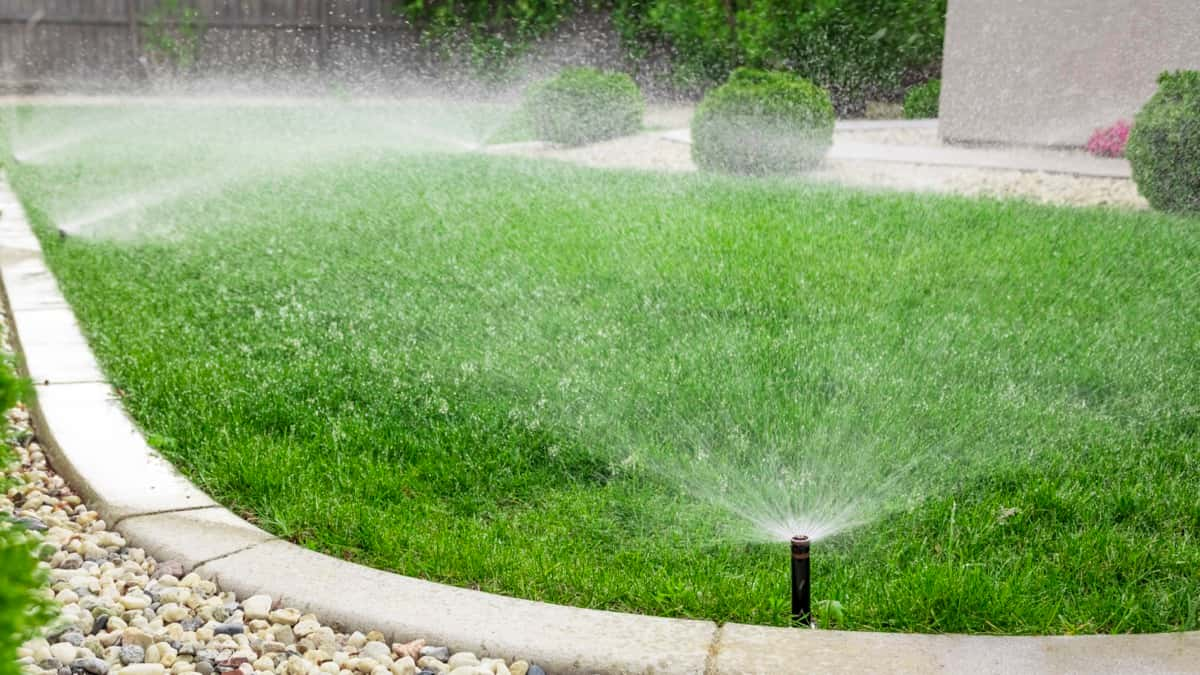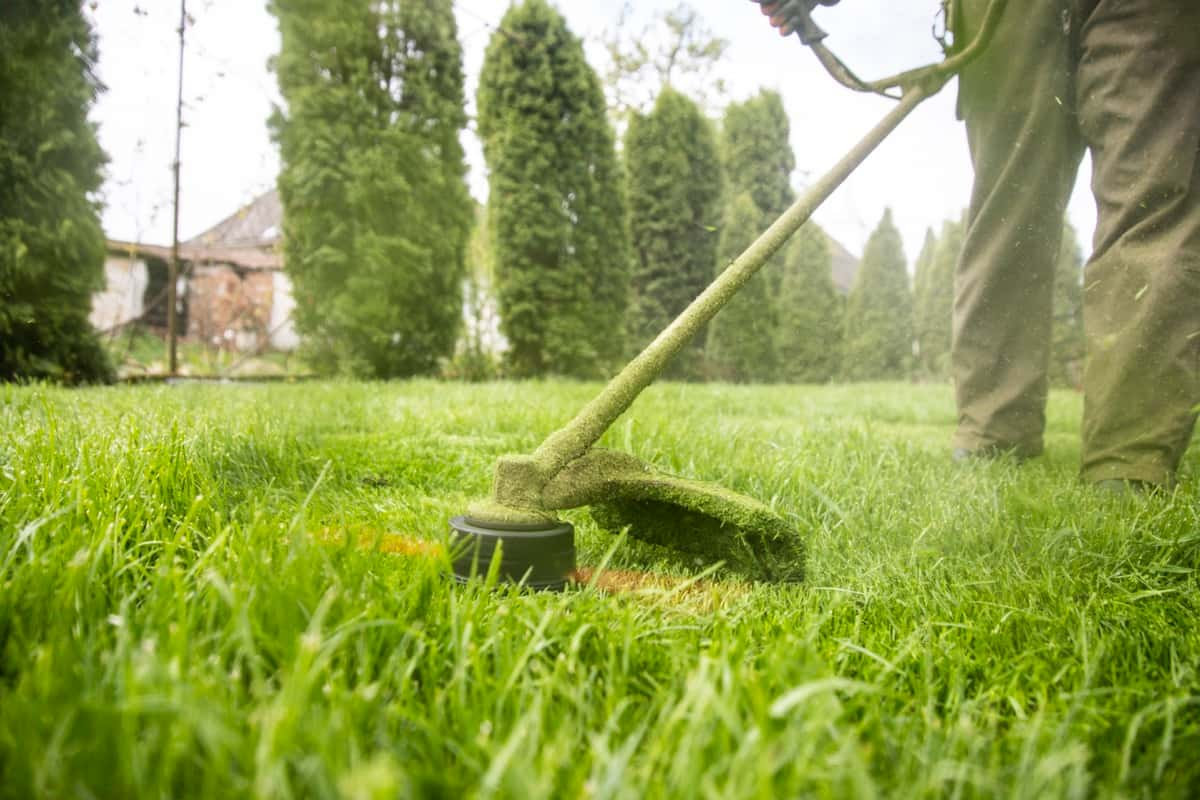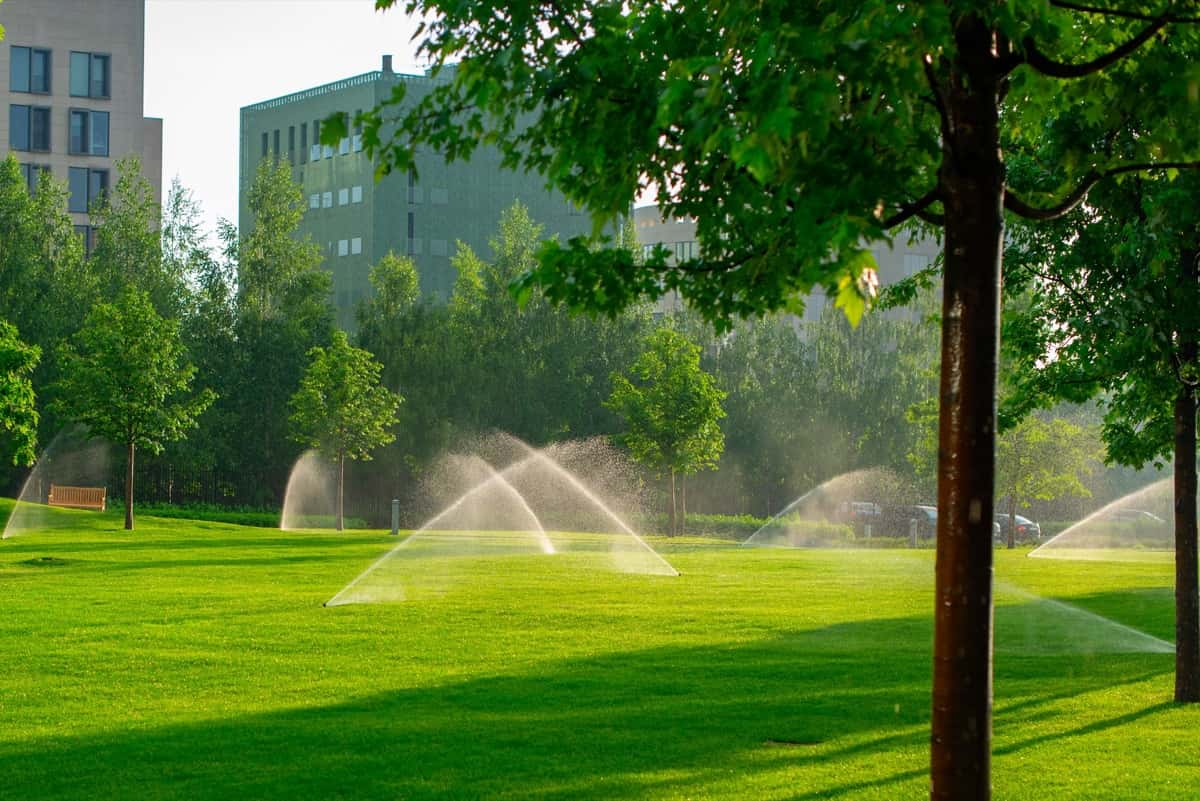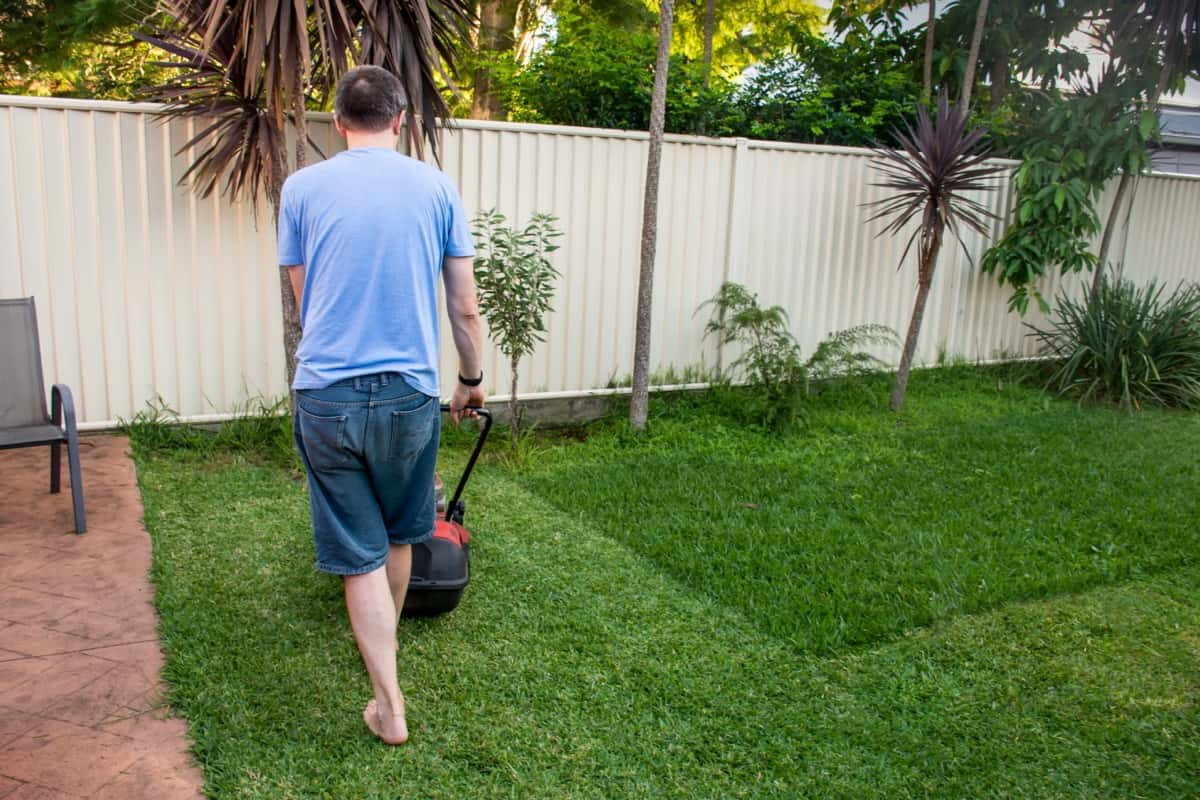Remember that each season has unique challenges and requirements for maintaining your lawn. With regular maintenance, you can get healthy and vibrant grass. Proper fertilization, watering, mowing, and weed control are essential for a healthy lawn. Maintaining a lush green garden requires consistent effort and dedication, but it can be done easily with the right lawn care tips.

Expert Lawn Care Tips
Go Native
Native plants are naturally grown in your area, so they are easily adapted to the local climate and soil conditions. They need less maintenance than non-native species. When you choose native plants for your lawn, you create an ecosystem that supports birds, butterflies, and other pollinators. These creatures rely on specific plant species for food and shelter, so including them in your garden can help support local wildlife populations.
Another benefit of going native is that these plants often have deep root systems, allowing them to withstand drought conditions better. They are also more disease resistant since they’ve evolved alongside local pests and diseases. So, if you want a low-maintenance lawn that benefits you and the environment, consider choosing native plant species over exotic ones.
Check the Soil pH
Healthy soil is an important factor in achieving a lush green garden. And one factor that affects soil health is pH level. Soil pH tells the acidity or alkalinity of your soil, and it can greatly affect plant nutrient availability. For example, adding lime can help raise the pH levels of acidic soils, while sulfur can lower alkaline ones.
It’s important to note that different plants have different preferences. So before adjusting anything, research the needs of each plant to flourish. By checking and adjusting your lawn’s soil pH levels as needed, you’ll be setting yourself up for success in creating a beautiful and vibrant outdoor space.
In case you missed it: Best Tips to Care for the Lawn in Winter

Sunshine
Sunshine plays a crucial role in maintaining the lush greenery of your lawn. While plants and grass need water to survive, they also require adequate sunlight to thrive. Sunlight is vital for Photosynthesis, which helps in producing food for plants. However, knowing that too much or too little sunshine can harm your garden’s health is essential. If your lawn gets direct sunlight for extended periods, it may dry out the soil and damage the grass leading to brown patches.
On the other hand, if the lawn does not get enough sunshine due to shade from trees or buildings nearby, then this can lead to weak growth and poor coloration. Thus, you must monitor how much sun exposure your lawn receives throughout the day. Ideally, most lawns require at least six hours of direct sunlight daily. Ensuring proper sunshine exposure through trimming trees and relocating items blocking light rays or planting shade-tolerant grass seeds like fescues will optimize plant health while avoiding excessive growth stimulation by unwanted weeds.
Be Careful with Watering
Watering your lawn is essential for keeping it healthy and lush green. However, being careful with watering is crucial, as too much or little water can harm your lawn. Overwatering can lead to shallow roots, which makes your lawn susceptible to disease and pests. It could also lead to uneven growth patterns in different garden parts. You should give your lawn a deep watering twice a week to avoid this.
In case you missed it: Best Fertilizer for Lawn Grass: Homemade, Organic, Compost, Liquid, How and When to Apply

This will encourage deeper root growth while preventing diseases from spreading. On the other hand, underwatering can cause grass blades to wilt and turn brown due to dehydration. Be sure not to water during peak sunlight hours as most of that water would evaporate before soaking into the soil properly. Early morning or evening are ideal times for watering because they allow enough time for absorption before evaporation occurs.
Keep Mowing
If you keep your lawn in the best shape possible, it’s important to stay on top of mowing. Generally, most lawns need to be mowed every 7-10 days during peak growing season. Cutting too much off at once can shock the plant. In addition to frequency and height, paying attention to mower blade sharpness is also important. Dull blades can tear rather than cut the grass blades cleanly, leading to browning and other issues.
Take Care of the Weeds
Weeds can be a nuisance for any lawn, decreasing the overall visual appeal of your garden. To keep your lawn free of weeds, there are some tips you should follow. It’s important always to maintain consistent mowing heights. This helps prevent sunlight from reaching weed seeds that may be present on your lawn’s surface, which ultimately inhibits their growth.
You can use vinegar or boiling water as an alternative to harsh chemicals. These non-toxic methods help eradicate weeds without harming other plants or wildlife. Regular maintenance is key to keeping weeds at bay. Regularly check for signs of weed growth and remove them before they become established in your lawn.
Make Edgings
The most ignored aspect of lawn care is creating a defined edge around garden beds and walkways. Edging not only enhances the appearance of your lawn but also serves as a barrier to protect your plants from encroaching grass or weeds. To create edgings, use an edging tool or spade to cut along the perimeter of your garden bed. Dig down at least 2-3 inches deep for optimal results. You can then remove any excess grass or soil inside the border and add mulch or rocks for added texture.
In case you missed it: Top 12 Carnivorous Plants to Grow Indoors: Easy to Care and Maintain

Edgings don’t have to be limited to straight lines either; you can get creative with curved borders that complement the natural shape of your landscape. Just maintain them regularly by trimming any overgrown edges and removing any debris. With some simple edging techniques, you can elevate your lawn’s look while keeping it healthy and well-maintained.
Aerate the soil
Aeration involves punching small holes into the soil to allow air, water, and nutrients deeper into the roots of your grass. This process helps reduce soil compaction, making it challenging for grassroots growth. Aerating also promotes healthy microbial activity in the soil, essential for breaking down organic matter and releasing vital nutrients. You can use a mechanical aerator depending on your lawn size. Manual aerators are suitable for small lawns, while mechanical ones are perfect for larger areas because they save time and energy.
It’s recommended that you aerate at least once a year during spring or fall when there is optimal growth but avoid doing so during periods of drought or extreme temperatures that could damage your grass further. By incorporating regular aeration as part of your lawn care routine, you’ll be able to maintain lush greenery throughout every season.
Fertilize to Keep it Thriving
Fertilizing your lawn is important if you want it to thrive and look lush green. This process provides the necessary nutrients that your lawn requires for healthy growth. However, it’s crucial to fertilize your garden in the right way. Before adding any fertilizer, ensure you understand what kind of soil type you have and choose a fertilizer that suits its needs. Some soils require more nitrogen, while others need more phosphorus or potassium. It’s best to conduct a soil test first before applying any fertilizer.
When fertilizing your lawn, you should not overdo it as this can damage the grass rather than help it grow better. You should also be careful when you fertilize. Springtime is an excellent time to start as this will promote new growth after winter dormancy; however, another good time is during fall before winter sets in. Don’t forget about organic options instead of chemical-based products since they are often gentler on both plants and the environment but still provide all necessary nutrients for optimal growth.
In case you missed it: How to Take Care of Seedlings After They Sprout: A Beginners Guide

Reseed Thin Areas
If you observe that your lawn has minimal grass, it’s essential to reseed those thin areas. This process helps fill the gaps and promote a lush green garden. First, use a rake to remove debris or dead grass from where you want to plant new seeds. After removing the debris, loosen up the soil using a garden fork so that seed can easily take root. Next, choose high-quality grass seed matching your lawn type and climate conditions.
Follow the instructions on the packet for optimal seeding density per square foot and water requirements. Once you have applied the seed, cover with topsoil or compost manure about ¼-inch thick layer evenly over the seeded area for better germination results. Water lightly but frequently during this period until germination occurs. It is important not to walk on newly-seeded areas until well-established, as walking could damage young plants’ roots before they grow strong enough.
Keep Cleaning Dead and Decaying Matter
When it comes to lawn care, always clean up any dead or decaying matter that may be present on your lawn. This keeps your lawn neat and helps reduce the risk of disease and pests. Dead plant matter can be a breeding ground for harmful insects and bacteria that can damage your lawn. Regularly raking away fallen leaves and removing dead branches or plants will help promote healthy growth in your lawn. Regularly cleaning up pet waste will make maintaining your yard easier and safer for those using it.
Keep the Pests Away
Pests can damage your lawn, plants, and flowers by eating them or laying eggs that hatch into destructive larvae. To keep your garden healthy and pest-free, take certain precautions. One way to keep pests is by planting flowers and herbs that naturally repel insects. Plants like lavender, marigold, basil, and rosemary deter common garden pests like mosquitoes, aphids, and whiteflies.
Another effective method is to use organic pesticides made from natural ingredients instead of harsh chemicals. These eco-friendly options work just as well without harming beneficial insects or polluting the environment. Regularly cleaning up dead leaves and debris helps prevent pests from taking over your garden. Fallen leaves are ideal for bugs to lay eggs or hide out during winter. Ensure you don’t overwater your lawn, which attracts many unwanted critters, including slugs and snails who thrive in damp conditions.
In case you missed it: How to Propagate Orchids Easily at Home: A Step-By-Step Guide

Conclusion
A lush green garden not only adds beauty to your home but also provides numerous benefits. A well-maintained lawn can improve the air and water quality around your house, reduce heat buildup in urban areas, and even increase property values. Remember to start early in the season with your lawn care routine to give yourself enough time to achieve your desired results. With consistency over time and attention to detail, anyone can have a beautiful green yard that they can be proud of.
- Gardening Techniques in Planting Vegetables
- Where to Place Indoor Plants in Your Home
- How to Grow Tomatoes Organically at Home: A Comprehensive Guide
- Organic Gardening on a Budget: Low-Cost Methods and Materials
- Gongura Seed Germination and Planting Methods
- Cabbage Seed Germination and Selection
- Broccoli Seed Germination and Selection
- Asparagus Seed Germination and Variety Selection
- Seasonal Flower Gardening: Best Practices for Spring, Summer, Fall, and Winter
- How to Grow Hibiscus from Flower
- Plantation Ideas for Home Decoration: A Beginners Guide
- Flower Garden Designs and Layouts for Beginners
- Planting and Spacing Techniques in Papaya: A Beginner’s Guide
- Growing Gold: Essential Techniques for Planting Pineapples
- How to Make Kalanchoe Plant Bushy: Home Remedies and Solutions
- 11 Reasons Why Your Gardenia is Not Blooming: Home Remedies and Solutions
- Eco Elegance: The Guide to Designing a Drought-Tolerant Landscape
- Gardening on a Slope: Strategies for Hillside Landscaping
- Nourish and Flourish: Top Organic Mulches for Thriving House Plants
- Everything You Want to Know about Indian Mogra Flower: Discover Uses and Growing
- Green Thumb Success: Expert Tips for Cultivating Greenhouse Pumpkins All Year Round
- Maximize Growth & Flavor: The Ultimate Guide to Companion Planting in Herb Gardens
- How to Control Rhododendron Problems Naturally: Home Remedies and Organic Ways to Fix Them
- Natural Magic: The Remarkable Benefits of Cinnamon for Plants
- Best Steps to Revive Dying Tulip with Natural and Organic Treatment
- 10 Reasons Why Your Angel Trumpet is Not Blooming: Remedies and Treatment
- How to Fix Periwinkle Leaf and Flower-Related Problems: Natural Remedies and Solutions
- How to Fix Zinnias Leaf and Flower Problems: Discover Natural and Home Remedies
- Organic Steps to Induce Lemon Tree Flowers: A Comprehensive Guide
- Bloom Booster: Crafting the Perfect Homemade Bougainvillea Fertilizer
- Optimizing Growth: A Guide to Applying NPK Fertilizer for Potted Plants
- 10 Best Homemade Fertilizers for Rubber Plant: DIY Recipes and Application Method
- How to Boost Female Pumpkin Flowers: Effective Steps for More Flowers and High Yields
- Transform Your Indoor Garden: Top Benefits of Pink Salt for Houseplants
- 10 Best Homemade Fertilizers for Peacock Plants (Calathea): Easy DIY Guide
- Unlock Blooms: 9 Reasons Why Your Potted Chrysanthemum is Not Blooming